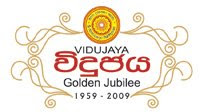By Naleen Ganegoda (e-mail : naleen_cg@yahoo.com)
Department of Mathematics, University of Sri Jayewardenepura
Most recent approach regarding mathematical modelling in Sri Lanka is developing a model for the transmission of Lymphatic Filariasis (Barawa). It will cover three major aspects as ;
- Measures to determine epidemiological situation of an endemic area
- Mathematical approaches to describe parasite dynamics
- Transmission and resurgence potential after Mass Drug Administration
Mathematical modelling is an effective tool in analysing the transmission of diseases. It paves the way for predicting the future impacts based on many epidemiological and immunological facts. There are two types of models used namely deterministic and stochastic. Deterministic models usually based on fundamental characteristics relevant to the disease and numbers of susceptible and infected are important variables while in stochastic models individual characteristics are taken into account.
Mathematical modelling will add more momentum to country’s research interests and it provides an opportunity to use scientific findings in decision making of administrative bodies.


No comments:
Post a Comment